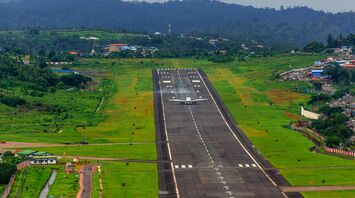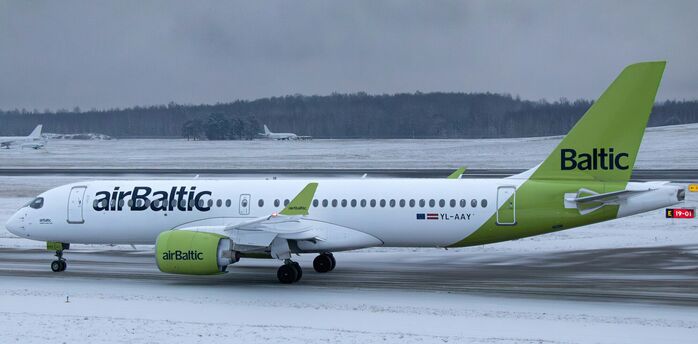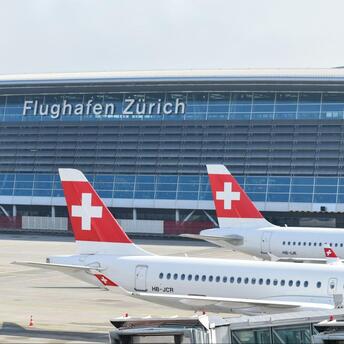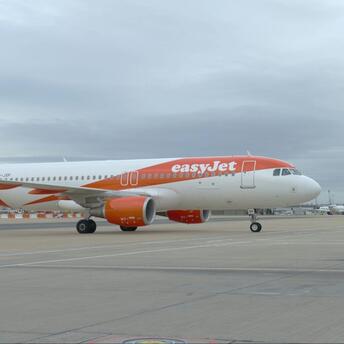A Journey to the Extremes: The World’s Northernmost and Southernmost Airports

For those with a taste for adventure, there’s something uniquely thrilling about traveling to the edges of the earth. While many globetrotters are content with exploring popular tourist destinations, some are drawn to the remote and wild, where the landscapes are untouched, and the airfields are few and far between. From the icy expanse of the Arctic to the windswept shores of Antarctica, the world’s northernmost and southernmost airports serve as gateways to some of the planet’s most extreme environments. These airports, operating in challenging conditions, represent more than just logistical feats—they offer travelers a glimpse into the farthest reaches of our world.
Northernmost Airports: Touching the Arctic Skies
Air travel to the Arctic Circle is not for the faint of heart. The region's harsh conditions and remote location make these airports a lifeline for both the communities they serve and the adventurers who seek to experience the north’s stark beauty.
Svalbard Airport, Longyear: The World’s Northernmost Commercial Airport
Svalbard Airport, located at 78 degrees north, holds the distinction of being the world’s northernmost airport with scheduled commercial flights. Situated on the Svalbard archipelago in Norway, this airport serves the town of Longyearbyen, a settlement perched on the edge of the Arctic. Flights here are few, primarily connecting to Oslo and Tromsø, but they are a crucial link between this remote outpost and mainland Norway.
Given the extreme latitude, flying into Svalbard offers passengers breathtaking views of glaciers, ice fields, and snow-capped mountains. The airport is a gateway to Arctic exploration, whether travelers are seeking to experience the northern lights, polar bear expeditions, or the eerie beauty of the midnight sun.
Alert Airport: The Northernmost Airstrip on Earth
While Svalbard is the northernmost commercial airport, the true northernmost airstrip on Earth is found at Alert, a military base in Canada’s Nunavut territory. Located just 508 miles from the North Pole, Alert Airport operates as a critical facility for military and research purposes. It primarily serves the Canadian Forces and scientists conducting Arctic research, with no scheduled commercial flights available.
Though not accessible to tourists, Alert’s existence is a testament to human resilience and the need for infrastructure in even the most remote regions of the globe. The base, surrounded by permafrost and Arctic wilderness, endures some of the harshest conditions on the planet, with temperatures plummeting well below freezing for much of the year.
Barrow (Utqiaġvik) Airport: America’s Northernmost Airfield
In Alaska, the northernmost airport with regular commercial service is Wiley Post-Will Rogers Memorial Airport, located in Utqiaġvik (formerly known as Barrow). As the northernmost point in the United States, Utqiaġvik sits on the frozen shores of the Arctic Ocean. This airport, though small, connects the isolated community to the rest of Alaska, with flights to Anchorage and Fairbanks.
For those visiting Utqiaġvik, the airport is the gateway to experiencing the raw beauty of Alaska’s Arctic, where the tundra stretches endlessly, and the unique culture of the Iñupiat people is deeply intertwined with the land.
Southernmost Airports: Venturing to the End of the Earth
At the opposite end of the world, the southernmost airports are equally fascinating, serving as launch points for scientific research, adventure tourism, and remote communities in the far reaches of the Southern Hemisphere.
Teniente R. Marsh Airport: Antarctica’s Primary Gateway
The southernmost airport with a permanent facility is Teniente R. Marsh Airport, located on King George Island in Antarctica. Serving the Chilean Antarctic Base, the airport is operated by the Chilean Air Force and is used primarily for scientific and logistical flights. Though not a commercial hub, it provides essential access to the icy continent for researchers and personnel from several nations.
The experience of landing on Antarctica is unlike any other. Passengers step into a frozen world where towering glaciers and vast ice sheets dominate the landscape. The airport is a key staging point for expeditions to the interior of the continent and the South Pole, making it a critical piece of infrastructure in the world’s most isolated region.
Ushuaia – The Southernmost Commercial Airport
While Antarctica may have the southernmost airfield, the southernmost airport with regular commercial flights is located in Ushuaia, Argentina. Ushuaia is often referred to as the "End of the World" and serves as a gateway to Antarctica, with many cruises departing from its port. Malvinas Argentinas Ushuaia International Airport, positioned at 54 degrees south, provides essential links to Buenos Aires and other parts of Argentina, as well as connections to Chile.
Ushuaia’s airport is surrounded by the rugged landscapes of Tierra del Fuego, a region known for its windswept mountains, glaciers, and pristine forests. For adventure travelers, the airport is the starting point for journeys to Antarctica or explorations of Patagonia’s wild terrain. As a major tourism hub for those venturing to the ends of the Earth, Ushuaia’s airport plays a crucial role in connecting travelers to some of the most remote destinations on the planet.
Puerto Williams Airport: A Contender for the Southernmost Title
Just a little farther south than Ushuaia, Puerto Williams Airport in Chile also claims the title of the southernmost airport in the world with regular commercial service. Though it’s a much smaller facility compared to Ushuaia, it is another key access point for travelers heading to Antarctica or exploring the southern tip of South America. Puerto Williams, on Navarino Island, is increasingly becoming a destination in its own right, known for its stunning wilderness and isolation.
The Challenges of Operating in Extreme Conditions
Both the northernmost and southernmost airports share one thing in common: they operate in some of the most extreme environments on Earth. The remoteness of these locations presents significant logistical challenges, from maintaining runways in sub-zero temperatures to dealing with limited daylight during the polar winter. Yet, despite these difficulties, these airports are essential lifelines for the communities and research stations they serve.
At both poles, airports often face severe weather, making flying conditions unpredictable. Pilots navigating these regions must contend with icy runways, strong winds, and poor visibility, requiring specialized training and equipment. Nevertheless, these airports continue to function as vital gateways for travelers, researchers, and military personnel, connecting them to the most distant corners of the Earth.



















